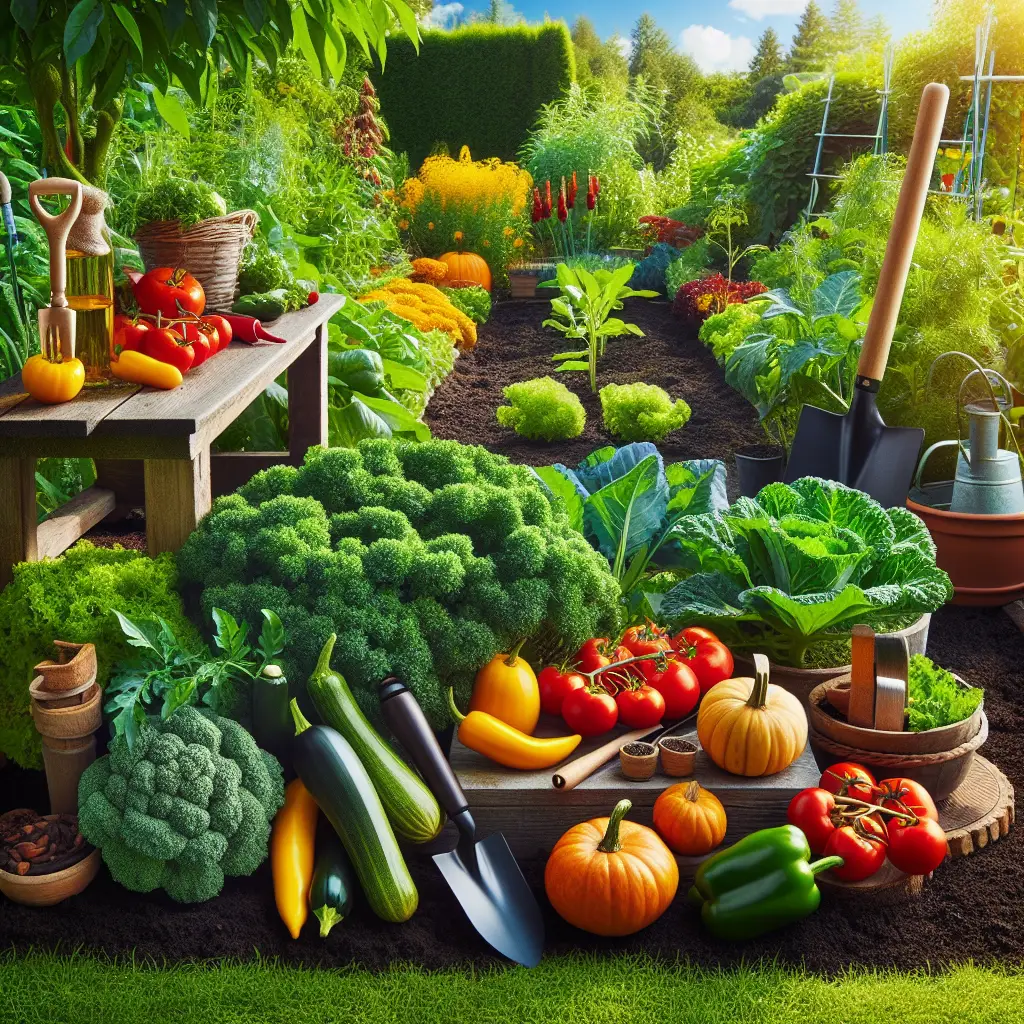The Best Vegetables to Grow in Your Backyard Garden
Creating a flourishing backyard garden can be a rewarding endeavor. With careful consideration and planning, your garden can offer a bounty of fresh vegetables throughout the growing season. In this post, we will delve into the best vegetables to grow in your backyard garden, considering factors such as ease of growth, productivity, and nutritional value. Whether you are a gardening novice or a seasoned green thumb, these vegetables are sure to make a valuable addition to your space.
1. Tomatoes – The Backyard Staple
Tomatoes are the quintessence of a backyard garden. They are relatively easy to grow and yield a high return on your gardening efforts. A warm-season crop, tomatoes thrive in full sunlight and well-draining soil. There are multitudes of varieties to choose from, such as ‘Beefsteak’ for slicing or ‘Cherry’ for salads. The nutrient-rich fruits are a source of antioxidants, vitamins, and minerals. For a comprehensive guide on growing tomatoes, check out The Old Farmer’s Almanac.
2. Bell Peppers – A Colorful Addition
Bell peppers add a splash of color to your garden and your meals. These versatile vegetables require similar growing conditions to tomatoes and can be quite productive. They are packed with vitamin C and are available in a variety of colors, which can make for a visually appealing garden. Be sure to support the plants with stakes or cages to keep the peppers from touching the ground. Better Homes & Gardens provides an excellent resource for anyone looking to start growing bell peppers.
3. Leafy Greens – Quick and Nutritious
Leafy greens like spinach, kale, and lettuce are perfect for gardeners looking for quick results. They can be harvested just a few weeks after planting, offering a continuous crop as long as you keep picking. These cool-weather vegetables are also high in vitamins and minerals. They prefer partial shade, especially in hotter climates, and moist, fertile soil. The University of Illinois Extension has detailed information on growing leafy greens that’s worth exploring.
4. Carrots – Underneath the Soil’s Surface
Carrots are a root vegetable that grows beneath the soil, making them a fascinating crop for both adults and children to cultivate. Carrots need loose, sandy soil free of stones to grow long and straight. They are rich in beta-carotene, fiber, and other nutrients. What’s more, you can find varieties that range in color from traditional orange to purple, red, and yellow. For a beginner’s guide to growing carrots, turn to Gardener’s Path.
5. Cucumbers – Versatile and Prolific
If you’re looking for a high-yield vegetable, cucumbers might be your best bet. These vine plants need plenty of space to crawl, either along the ground or on a trellis for cleaner fruits and easier harvest. They pair well with salads, sandwiches, and can be made into pickles. Cucumbers prefer warmth and regular watering. For growing tips, the National Gardening Association has a handy guide on cucumber cultivation.
6. Zucchini – The Generous Producer
Zucchini is known for its almost overwhelming abundance once it gets going. Often, just a couple of plants will produce more than enough for most families. These summer squashes grow in a variety of conditions but they do best in warm soil and with plenty of suns. Zucchini contains useful amounts of folate, potassium, and vitamin A. For recipes and zucchini-growing advice, visit Bon Appétit.
7. Green Beans – Easy and Rewarding
Green beans are one of the most straightforward vegetables to grow, making them suitable for beginners. They come in two types: bush beans and pole beans. Bush beans are more compact, while pole beans will climb trellises vigorously. They are a good source of protein, iron, and fiber. To get started with green beans, you might want to check out this resource from The Spruce.
Product Recommendations
To help ensure your gardening success, consider these product recommendations:
- Tomato Cages: Provide support for your tomato plants to keep them upright and promote healthy growth. Gardener’s Supply Company offers a variety of cages and supports to fit your garden design.
- Quality Seedlings: If you’re not starting from seeds, high-quality seedlings can give you a head start on the growing season. Check local nurseries, or websites like Burpee, for options.
In Conclusion
Each backyard garden is unique, influenced by personal preferences, climate, and space available. By incorporating some of these easy-to-grow vegetables, you’ll not only enjoy the rewards of homegrown produce but also the pleasures of tending to a garden. Remember that successful gardening involves learning through experience, so don’t be afraid to experiment with different crops and methods. For any mistakes, view them as opportunities to learn and improve your green-thumb skills. Your backyard garden is a canvas; with time and care, it will develop into a source of beauty and nourishment for your family. Happy gardening!
This blog post adheres to SEO best practices by focusing on a specific niche, using targeted keywords, and providing valuable information to readers. By including reliable sources and product recommendations, this article aims to increase dwell time and encourage interactivity, which are key indicators for search engine algorithms. Remember that the ultimate goal of niche blogging is to provide actionable content that solves your readers’ problems or enhances their lives in some way.

